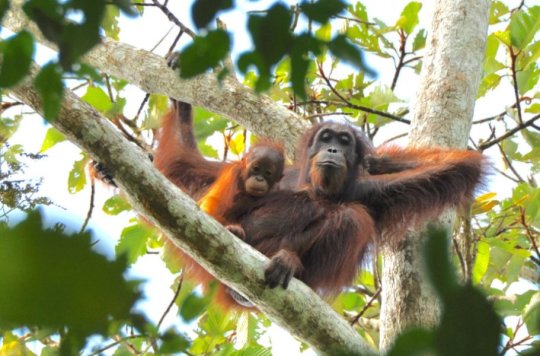[ad_1]
The evolution of the orangutan has been more heavily influenced by humans than was previously thought, new research reveals.
Professor Mike Bruford, of Cardiff University, was part of the team of scientists shedding light on the development of the critically endangered species. Their findings offer new possibilities for orangutan conservation.
One of humans’ closet living relatives, the orangutan has become a symbol of nature’s vulnerability in the face of human actions and an icon of rainforest conservation.
But in the research paper published in the journal Science Advances, the team argues this view overlooks how humans, over thousands of years, have shaped the orangutan known today.
Professor Bruford, of the Sustainable Places Research Institute and the School of Biosciences who is a co-author of the paper, said: “This research offers new hope for how we can save the orangutan from extinction.
“Our studies show that orangutans actually have a long history of adapting their behaviour to survive in different areas, even those that have been heavily impacted by humans. This means they can live in much more varied habitats than previously thought.
“There needs to be a multifaceted approach to conservation efforts that incorporates human-dominated landscapes, reduces hunting and increases habitat quality.”
It was often assumed that environmental factors like fruit availability were primarily responsible for most features of modern-day orangutans, such as the fact that they usually live at low densities and have a restricted geographic distribution.
But the study indicates the orangutan that existed before modern humans and arrived in Southeast Asia 70,000 years ago may have been quite different.
Lead author Stephanie Spehar, an associate professor of anthropology at the University of Wisconsin Oshkosh, said: “Our synthesis of fossil, archeological, genetic and behavioral evidence indicates that long-term interactions with humans shaped orangutans in some pretty profound ways.”
These creatures were once far more widespread and abundant, with orangutan teeth among the most common animal remains in deposits in China, Thailand and Vietnam. They weathered many environmental changes and may even have lived in a wider range of environments than their modern counterparts.
Today, the orangutan is only found on the islands of Borneo and Sumatra.
Studies of the species living in heavily human-impacted habitats, such as oil palm and forestry plantations, highlight that the apes can adapt to survive in such areas, at least in the short term.
It had always been assumed that orangutans were mostly arboreal, but camera traps in the forest showed they also walk extensively on the ground in some areas. The team is calling for these findings to be applied to conservation efforts immediately.
Professor Bruford added: “Although much effort has already been made to understand the endangered orangutan, this latest study shows that much work still needs to be done to ensure conservation strategies are as robust and wide-ranging as possible. Only then will we stand a fighting chance of preventing this incredibly important animal from being wiped out.”
Story Source:
Materials provided by Cardiff University. Note: Content may be edited for style and length.
[ad_2]















